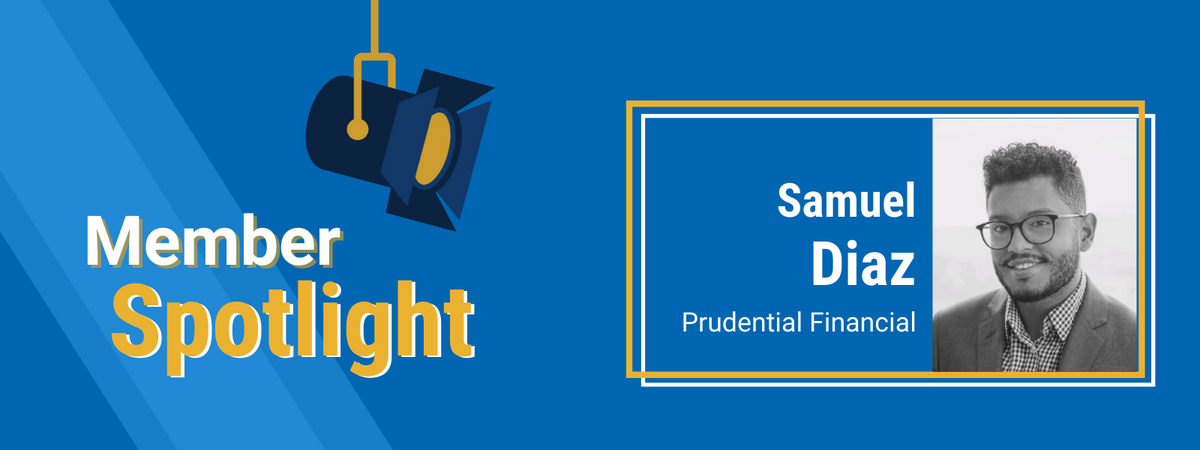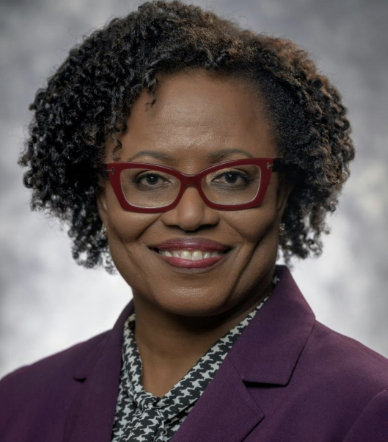 Meet our members! AFN’s greatest asset is our members—a diverse network of national, regional, and community-based foundations, financial institutions, and grantmakers—investing in advancing equitable wealth building and economic mobility. Check back each month and meet your peers!
Meet our members! AFN’s greatest asset is our members—a diverse network of national, regional, and community-based foundations, financial institutions, and grantmakers—investing in advancing equitable wealth building and economic mobility. Check back each month and meet your peers!
1: What is the mission of your organization and how is advancing equitable wealth building and economic mobility incorporated into the work?
Prudential Financial is a financial services company with a purpose to make lives better by solving the financial challenges of our changing world. The Prudential Foundation advances the company’s purpose by building partnerships that help close the financial divide nationally, globally, and locally in our headquarter city of Newark, New Jersey. Equitable wealth building is core to our approach towards strategic grantmaking, both in Newark where we aim to advance inclusive economic growth, and nationally through partnerships that focus on creating opportunities for more people to build and grow wealth. Some examples include establishing the Newark Asset Building Coalition, bringing together the city’s stakeholders to tackle challenges with an asset-building lens; and launching our Global Opportunity Youth commitment, investing $180 million in philanthropy and impact investing to make sure brilliant, diverse young people have equitable access to good jobs and a good education.
2: What are some of the permanent pivots you have made as a result of the COVID-19 pandemic and the current moment emphasizing the critical need for strategies that provide a range of support to women and Black, Latinx, Indigenous and Asian people and communities?
The past several years have been challenging, but rewarding. The Prudential Foundation reached it’s $1 Billion milestone this year, a great accomplishment and testament to Prudential’s steadfast commitment to our communities throughout the decades. But as we look to the next billion, we’ve taken steps to ensure that we continue to approach grantmaking with an equity lens. Recognizing that diverse-led organizations, especially those that are Black-, Latino-, and Indigenous-led, face significant barriers to accessing philanthropic capital, we have integrated organizational diversity into our due diligence process for the first time, helping to ensure we are funding organizations that look like the communities they serve. Another first: we have begun collecting disaggregated data on people served to confirm and inform how we are reaching communities of color through our funded programs. We are also even more intentional and flexible about funding general operating and multiyear grants, knowing how critical it is for most nonprofits. Finally, we have refreshed our Work and Wealth portfolio, more intentionally focusing on innovation around the next generation of financial solutions, including shared equity models that create tangible wealth-building pathways for individuals who have historically experienced marginalization from traditional services.
s
3: What are some of the most significant gaps that you have identified that could help address economic equity?
As someone who has worked across nonprofit, foundation, and corporate spaces, I feel strongly that economic equity can be achieved with the support of companies that are able to authentically and consistently show up for communities of color and embed equity within their internal and external practices. The adage of “doing well by doing good” is true for most companies, and I would like to see more corporations embrace it, even as my team and I continue to challenge ourselves to more fully embrace the capabilities and resources of our own businesses to drive social impact.
4: Thinking about your previous answer, what do you see as the biggest barriers or challenges for philanthropy to address these gaps?
Thinking about the intersection of business and philanthropy, there might be too many challenges to list, but embracing diversity, inclusion, and equity internally first is key if a company aspires to have real impact externally. More corporations need to move from thinking about equity as a compliance exercise or a marketing tactic, dispelling the biased patterns of thought and behavior that view communities of color and low-to-moderate income families as anything less than the key to the future economic prosperity of this country and broader world. That said, I think folks in the nonprofit and philanthropy space sometimes take too cynical a viewpoint towards the corporate space, and although I get it, I still believe the potential for scale and influence is exponentially greater when we can bring business along.
s
5: What have been some of the biggest benefits of being part of the Asset Funders Network?
As someone who was newer to national and corporate philanthropy, being part of the Asset Funders Network for the past four years has been nothing but rewarding, instructive, and engaging. Not only was I able to better connect and coordinate with peers locally through the Greater New York chapter, I was also able to connect with funders, experts, and practitioners outside my normal sphere through cross-national events, webinars, and working groups, significantly impacting my approach towards investing in wealth-building interventions.
6: What is your favorite online shop owned by women or people of color?
I do not do much online shopping, but Etsy has highlighted a great selection of sellers in honor of National Hispanic Heritage Month.
About Samuel Diaz, Manager, Inclusive Solutions, Prudential Financial
Samuel manages philanthropic partnerships within the Work and Wealth portfolio for the Prudential Foundation, in addition to leading their social impact measurement efforts.

